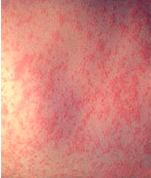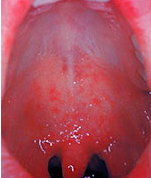The Measles outbreak continues: Here is the recent update from the Center For Disease Control
https://www.cdc.gov/features/measles/index.html
PROTECT YOUR FAMILY WITH THE HELP OF UNI URGENT CARE
In 2018, the CDC confirmed 349 individual cases of measles in 26 states. This is the second greatest number of annual cases reported since measles was eliminated in the U.S. in 2000. And with the arrival of the new year, the outbreak is showing no signs of slowing down. Not only is it important to make sure your vaccines are up to date but it’s also imperative to understand the symptoms and signs of the measles. And when in doubt visit or contact your nearest UNI location.*
Symptoms of measles generally appear about 7-14 days after a person is infected, and typically begins with high fever, cough, runny nose and red/watery eyes. 2-3 days after symptoms begin tiny white spots may appear on the inside of the mouth (shown bottom) and after 3-5 days a rash breaks out, usually on the hairline of the face spreading down to the neck, trunk, arms, legs and feet (shown top).*

 Those at highest risks for contracting measles are infants and children less than five years old, adults older than 20 years, pregnant women and people with compromised immune systems, such as from leukemia and HIV infection. Measles is one of the most contagious of all infectious diseases; approximately 9 out of 10 susceptible persons with close contact to a measles patient will develop measles. The virus is transmitted by direct contact with infectious droplets or by airborne spread when an infected person breathes, coughs, or sneezes. Measles virus can remain infectious in the air for up to two hours after an infected person leaves an area. However, it is highly unlikely that you contract measles if you have completed the 2-part vaccination series.*
Those at highest risks for contracting measles are infants and children less than five years old, adults older than 20 years, pregnant women and people with compromised immune systems, such as from leukemia and HIV infection. Measles is one of the most contagious of all infectious diseases; approximately 9 out of 10 susceptible persons with close contact to a measles patient will develop measles. The virus is transmitted by direct contact with infectious droplets or by airborne spread when an infected person breathes, coughs, or sneezes. Measles virus can remain infectious in the air for up to two hours after an infected person leaves an area. However, it is highly unlikely that you contract measles if you have completed the 2-part vaccination series.*
If you or a loved has been exposed to Measles, contact UNI so we can make arrangements to evaluate you and treat you if needed. While mortality rates from measles remains low, we want to help you understand the symptoms. Contact your nearest UNI location if you suspect contraction or exposure.
